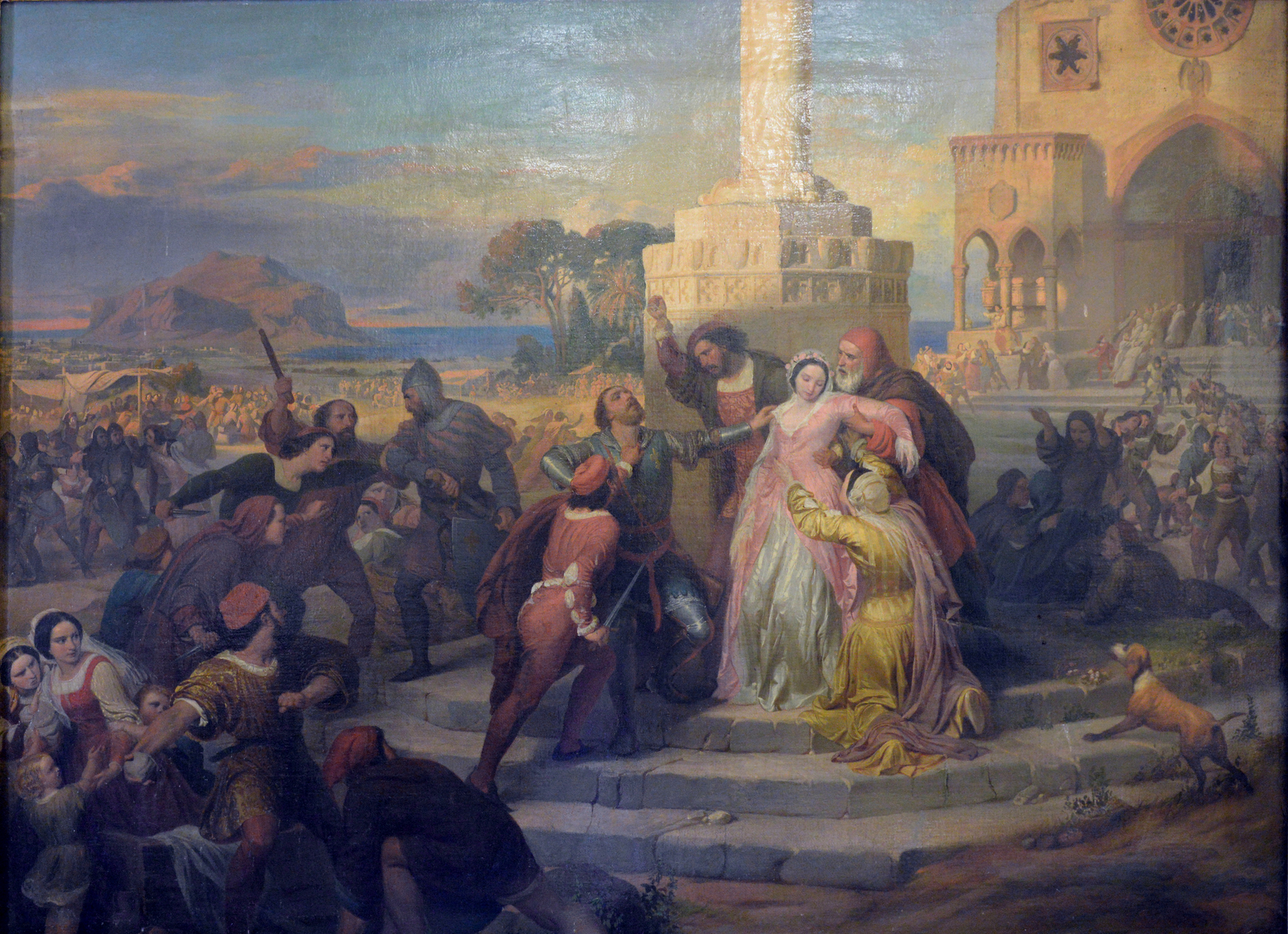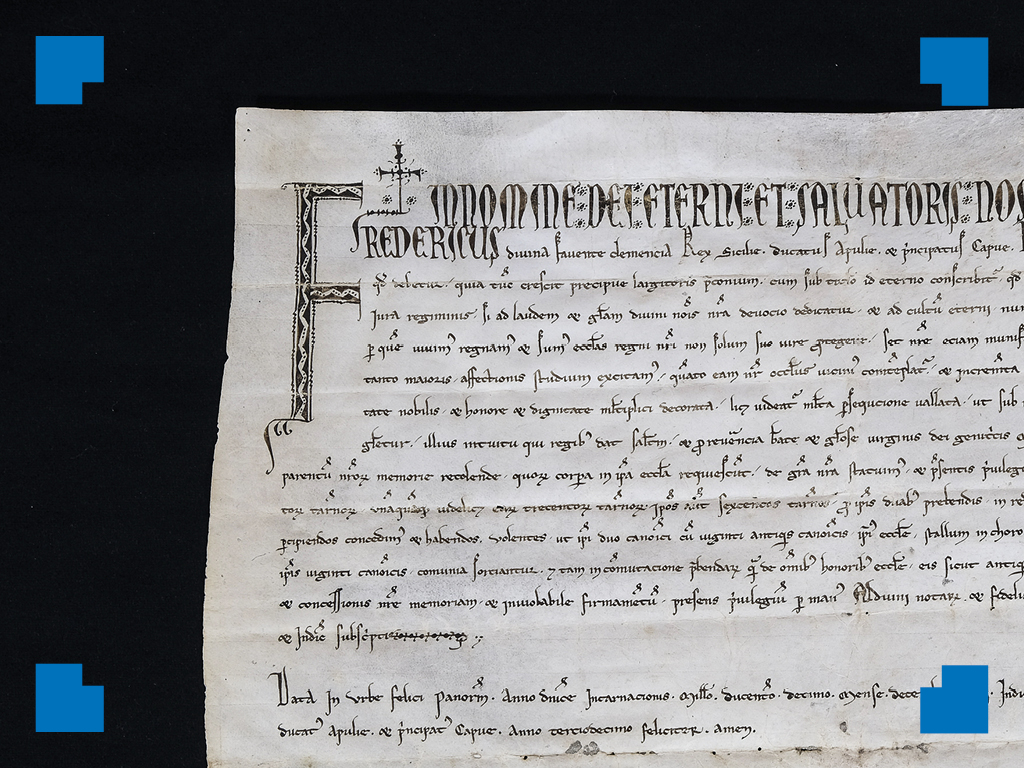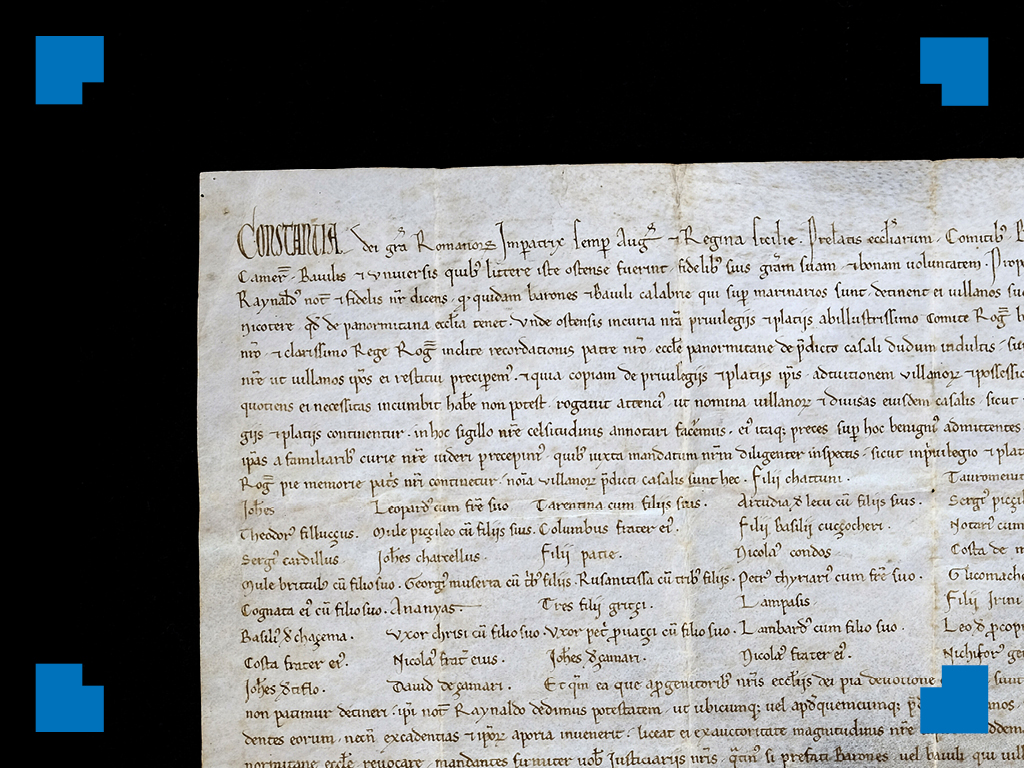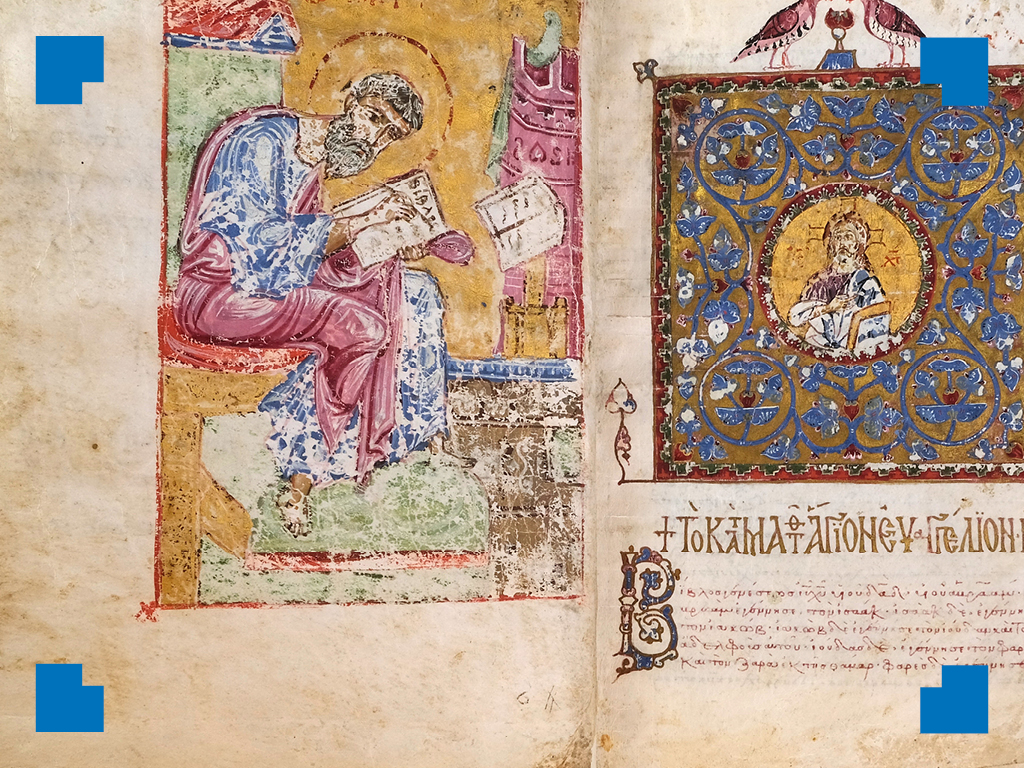
24. The Sicilian Vesper
Bernardino Riccardi, mid-19th c. – before 1854
The Sicilian Vesper
oil on canvas within in gilded wooden frame
(135×175 cm; canvas: 111×151 cm)
Palermo, Tasca d’Almerita Collection
This painting portrays a very famous historical episode, a French soldier harassing a Sicilian woman on March 30 or 31, 1282, which triggered the revolt of the so-called Sicilian Vespers (Focus cat. 24).
The work was commissioned by Lucio Mastrogiovanni Tasca and Nicolosi Count d’Almerita (about 1820 – 1892) in the mid-nineteenth century to painter Bernardino Riccardi (1814-1854), born in Parma but working in Rome.
The Count was probably against the Bourbon dynasty that had been ruling over Southern Italy since 1735. This subject was interpreted, not only in Sicily, as the first stage of the struggle for liberation against tyranny.
The subject of Riccardi’s painting is largely taken from the same subject painted by Francesco Hayez in 1822. At the center of the scene – with the imaginary Norman church of S. Spirit of Palermo on the background – there is the woman who suffered the violence and who, fainting, is rescued by a friar and another woman.
Her husband is portrayed as he beats the soldier (wearing the blue robe with lilies of France), who is killed by another character.
All around them, the revolt of the Sicilians against the invaders, while in the background, on the left, you can see Palermo surrounded by the lush plain, with its characteristic monumental Monte Pellegrino.
The violence against a woman during the Vespers led another woman, Constance of Swabia, to avenge the murder of her father Manfred by King Charles of Anjou, taking back the throne of her grandfather, King and Emperor Frederick II.
Focus – The Sicilian Vespers
During the “Sicilian Vespers”, at the end of March 1282 (on 30 or 31) near the Norman church of S. Spirito in Palermo, the people of Palermo rebelled against the Angevin rulers, so called after the name of the King of Naples, Charles of Anjou, who had been supported by Pope Innocent IV and who had defeated Manfred of Swabia at Benevento in 1266.
According to the tradition, the outbreak of the revolt was caused by a French soldier who had molested a helpless Sicilian woman, triggering the reaction of fellow citizens.
The commotion – which had certainly been organized – spread throughout Sicily and put in serious difficulty the French, until the arrival on the island of King Peter III of Aragon.
The Aragonese sovereign was summoned by the Sicilians, who saw him as the legitimate sovereign, having married Constance of Swabia, daughter of Manfred and granddaughter of King and Emperor Frederick II and therefore the main heir to the throne of Sicily.
By doing so, the Sicilians aimed to bring the crown back to the origins of the Norman-Swabian kingdom and, above all, to claim an island kingdom independent from Naples.
The fame of this event lasted over the centuries and was recalled during the revolutionary uprisings against the Bourbon sovereigns in the first half of the nineteenth century, because it was the emblem of a united and independent Sicilian nation (Focus cat. 24 bis)
The Sicilian Vespers as a fundamental example against tyranny was disseminated by Arabist historian Michele Amari Palermo (1806-1889), who published a volume dedicated to this episode in Paris in 1843.
The “Vespers” were also immortalized by famous painters, including Francesco Hayez (1791-1882) and Domenico Morelli (1823-1901), and Giuseppe Verdi (1813-1901) composed the opera “I Vespri Siciliani”, staged in Paris in 1855.
Focus – The Creation of the Norman Myth in the Nineteenth Century, Aristocratic Patronage in Palermo
Alongside the royal commissions of the Bourbons (Focus, cat. 21) on the buildings of power (political: the Royal Palace of Palermo; religious: the Cathedral), some of Palermo’s aristocrats also recognized in the medievalist revival a style that was, at the same time, fashionable and representative of the historical and cultural roots of the Sicilian nation. Some of them saw the example of the Sicilian Vespers as the political key (Focus cat. 24).
One of the first was the nobleman Ettore Pignatelli Aragona, who built a romantic neo-Gothic building by the sea between 1827 and 1829 with architect Domenico Cavallari Spadafora. He called it Villa Cortès, from the name of the conqueror Hernán Cortés from whom his princely family was proud to descend.
With greater stylistic care, around 1835 Domenico Lo Faso Pietrasanta Duke of Serradifalco, a man with a vast culture and main reference for the travelers of the Grand Tour (Focus cat. 22), erected a small palace out of the city walls with the collaboration of the same architect.
Between the fourth and the fifth decade of the century another very influent figure, the administrator of the royal properties in Palermo, Marquis Enrico Forcella, transformed an ancient ruined palace in an “Arab-Norman” commemoration. It included a hall that recalled the Alhambra in Granada (Spain), a hall with a copy of the mosaics of the Zisa, a hall with a reproduction of the mosaics of the Hall of King Roger in the Royal Palace.
These sumptuous and cultured spaces became so popular that they were visited among others by King Ferdinand II of the two Sicilies, Crown Prince Charles of Prussia and King Ludwig of Bavaria.
Another conspicuous example is the so-called casino of the “Quattro Pizzi” on the sea of Arenella in Palermo, built by architect Carlo Giachery (1840-44), by will of a bourgeois entrepreneur on the rise, the founder of the main industrial family in Palermo of the Belle Epoque: Vincenzo Florio. This building too aroused the interest of none other than Tsar Nicholas I of Russia, which had a replica built in St. Petersburg.
Meanwhile, around 1835-36, Lieutenant General of the King (the viceroy), Antonio Lucchesi Palli Prince of Campofranco, commissioned architect Emmanuele Palazzotto to realize the neo-medieval facade of his city palace.
Significantly, the building overlooks the square dedicated to the Cross of Vespers, that is, where many of the French killed during the historic revolt of 1282 are thought to have been buried.


